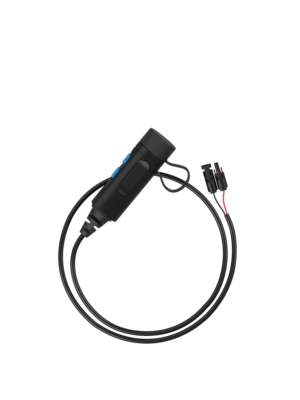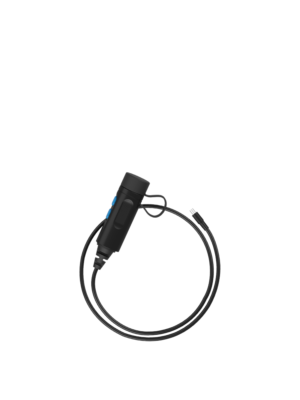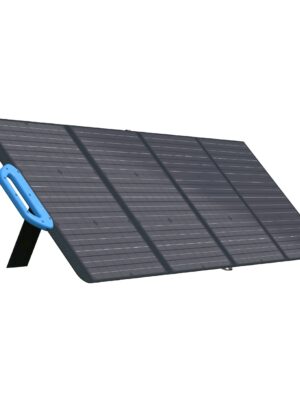‘Alien’ signal was likely a very big truck
There’s no doubt an extremely bright fireball careened through the atmosphere north of Papua New Guinea on January 8, 2014. It’s also true that divers recovered materials at the bottom of the ocean last year near where many experts believed the object landed—and that prominent Harvard astrophysicist Avi Loeb theorized some of these metallic spherules were possibly of “extraterrestrial technological” origin. But as to the ground vibrations recorded at a seismic station on Manus Island during the same atmospheric event? The explanation is likely much more mundane.
“[T]hey have all the characteristics we’d expect from a truck and none of the characteristics we’d expect from a meteor,” Johns Hopkins planetary seismologist Benjamin Fernando said on Thursday.
Fernando and his colleagues will present their findings on March 12 during the annual Lunar and Planetary Science Conference in Houston, Texas.
Although Fernando’s team concedes it’s difficult to prove what something isn’t through signal data, it’s pretty easy to highlight the characteristics it may share with existing, explainable seismic info.
“The signal changed directions over time, exactly matching a road that runs past the seismometer,” said Fernando.
[Related: How scientists decide if they’ve actually found signals of alien life.]
To further bolster the much more everyday explanation, researchers also utilized data collected during the 2014 event by facilities in Australia and Palau originally built to measure nuclear test sound waves. After factoring in those recordings, Fernando’s team revised the previous location estimations for a more exact spot of the atmospheric occurrence—an area 100 miles away from the original region.
“The fireball location was actually very far away from where the oceanographic expedition went to retrieve these meteor fragments,” Fernando said of the 2023 recovery trip. “Not only did they use the wrong signal, they were looking in the wrong place.”
The team also doesn’t mince words in their new paper, “Probably Not Aliens: Seismic Data Analysis from the 2014 ‘Interstellar Meteor.’” Of the alien theory, the researchers “consider it to be at best highly overstated and at worst entirely erroneous.” And of the material recovered last year, “poor localisation implies that any material recovered is far less likely to be from the meteor, let alone of interstellar or even extraterrestrial origin.”
[Related: How lightning on exoplanets could make it harder to find alien life.]
Given NASA’s estimate that around 50 tons of meteoritic material bombards Earth every day, Fernando’s team says it’s definitely possible some of those fragments retrieved from the ocean floor may indeed be from some other meteorite. Regardless, they “strongly suspect that it wasn’t aliens.”
Disappointing? Perhaps. But there’ll probably be plenty of new UAP sightings to parse in the future—especially if people take up the government’s offer to submit their own inexplicable events.
For more detailed debunking, tune into a livestream of next week’s findings here.
Please Support Our Sponsors
Solar Power Generator Discounts Along With Free Shipping
- 10% OFF for Jackery Solar Generator 2000 Pro Series with code "JADEAL"
- 10% OFF for Jackery SolarSaga 200W Solar Panel with code "JADEAL"
- 10% OFF for Jackery Solar Generator 1500 Series with code "JADEAL"
- 10% OFF for Jackery Solar Generator 1000 Series with code "JADEAL"
- 10% OFF for Jackery Explorer 1500 Portable Power Station with code "JADEAL"
- 10% OFF for Jackery Explorer 1000 Pro Portable Power Station with code "JADEAL"
- 10% OFF for Jackery Explorer 500 Pro Portable Power Station with code "JADEAL"
- 10% OFF for Jackery Explorer 300 Pro Portable Power Station with code "JADEAL"
- 10% OFF for Jackery SolarSaga 100W Solar Panel with code "JADEAL"

The University of Georgia is represented by the Georgia Bulldogs . The Bulldogs participate in the Southeastern Conference's (SEC) Eastern Division of the NCAA.
They play their home games in the storied Sanford Stadium in Athens, Georgia. The first season in Georgia was in 1892. In 1942, 1980, and 2021, the Georgia Bulldogs won three national championships.
The Georgia Bulldogs have additionally been crowned the National Champion in four additional seasons by at least one polling organization (1920, 1927, 1946 and 1968).
The Georgia Bulldogs are tied for second place in conference history with their 15 conference titles, including 13 SEC titles, and their 59 bowl appearances, which ranks second all-time.
In addition, the program has produced five top picks in the National Football League (NFL) draft, two Heisman Trophy winners, numerous winners of various national honors, and many others.

Longhorns football represents the University of Texas in Austin often known as Texas, UT or the Texas Longhorns. The Longhorns represent the Big 12 Conference in the NCAA Division. They play in Austin, Texas, at the Darrell K. Royal-Texas Memorial Stadium.
The Texas Longhorns are ranked third and seventh, respectively, in terms of all-time wins and win-loss records, with over 900 victories and an overall win-loss percentage of.705.
The legendary program also boasts four national titles, 32 conference titles, 100 First Team All-Americans, and two Heisman Trophy winners.
Get your Texas Longhorns Revival T-Shirt today. The Texas Longhorns Rustic Revival shirt is also a fan favorite.
Many college sports fans like to wear their gear all around town, get your Texas Longhorns Centered gear and show your support.





 Gettr
Gettr














